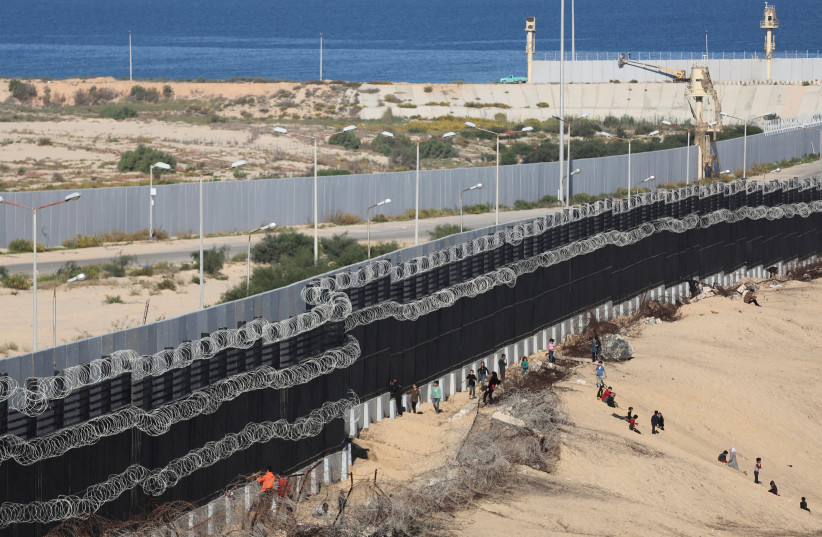Escape to Egypt: Did Hamas leader Yahya Sinwar flee Gaza?
We must start with a simple and honest statement: No one knows where the Hamas leader in Gaza, Yahya Sinwar, is.
What we do know is that on the list of people who don’t know are Hamas’s leadership in Qatar and some Hamas officials in Gaza – who have known where he was until now.
Into this vacuum walks Defense Minister Yoav Gallant’s statement earlier this week that Hamas is seeking a new leader to replace Sinwar, followed by a report in the Saudi Elaph media outlet claiming to know about classified Israeli intelligence that says that Sinwar has likely managed to escape into Egypt.
This is something a top IDF official flatly denied, with none of the usual qualifications. So, it seems the IDF doesn’t believe he made it to Egypt.
The question is, where is he now? What places might he be in?

Intel that Israeli forces gathered in Khan Yunis showed he was there recently. This means that around a week ago, he had not fled to Egypt – something which many feared for months, and it would have been easier for him to flee into the Sinai at earlier points.
Now, why would he flee to Egypt? If his sole goal is to survive, Egypt is his best bet, because it would help give him a chance to avoid capture and assassination by Israel in Gaza, under Israel’s increasing operational control.
Plus, if he were to be captured by the Egyptian authorities, they likely would not kill him. But, this exact scenario is the very reason for him not flee to Egypt.
Sinwar is closely associated with the Muslim Brotherhood, which briefly ruled Egypt for around 18 months during the 2010s and is viewed by Cairo’s current rulers as an enemy.
The fact that the Egyptians deal with him is more pragmatic than anything else.
But now Hamas may be on the ropes, and arresting Sinwar, and possibly torturing him to get him to help end the war in Gaza and return the hostages, could be a real scenario that plays out for Sinwar if Egypt catches him.
Either way, if Egypt caught him, Cairo would have special leverage with him over his future, a position Sinwar would likely want to avoid.
A much tougher option for Sinwar is to pass through Egypt and seek safety in a third country, like Qatar, Turkey, or Iran, a place where he would be secure.
This is possibly Israel’s worst-case scenario and remains highly unlikely due to the prospect of capture by the Egyptians.
Israel has also been closely watching the Rafah border with Egypt in recent weeks, since the IDF gained control over Khan Yunis and has easier access.
The most likely hiding place of Sinwar remains Rafah or Khan Yunis. For most of the war, the suspicion, later confirmed by intelligence findings, was that he was in Khan Yunis.
The question is: Where did he run to after he left his multi-million dollar lair with hostages held in specially customized cages in Khan Yunis?
The possibilities of Sinwar’s ‘escape route’ are almost endless
Did he risk remaining there, still the area he knows best but is under heavy IDF control?
Or did he flee to Rafah, hoping to shield himself or stall for time behind 1.5 million civilians, four Hamas battalions, and all of the diplomatic obstacles delaying an Israeli invasion there?
The Elaph report said that other Hamas leaders fled into Egypt. The IDF has not commented on that aspect of the report, so it remains possible that others did make it to Egypt.
Osama Bin Laden, at the time, turned out to be hiding – for nearly ten years – very close to a top Pakistani defense base, a dangerously easy place to access. He got away with it because it was so close that no one looked there carefully.
Sinwar could have gone to central or northern Gaza, where the IDF has even stronger control, hoping to find one isolated spot where no one would look for him since no one thinks he would be crazy enough to go into an area with greater IDF control.
While we do not know where Sinwar is, the longer his absence prevails, the more likely that these leaks will lead to Hamas replacing him, even if only temporarily, just so that it can continue to impact the war and hostage negotiations in a real way.




Comments are closed.